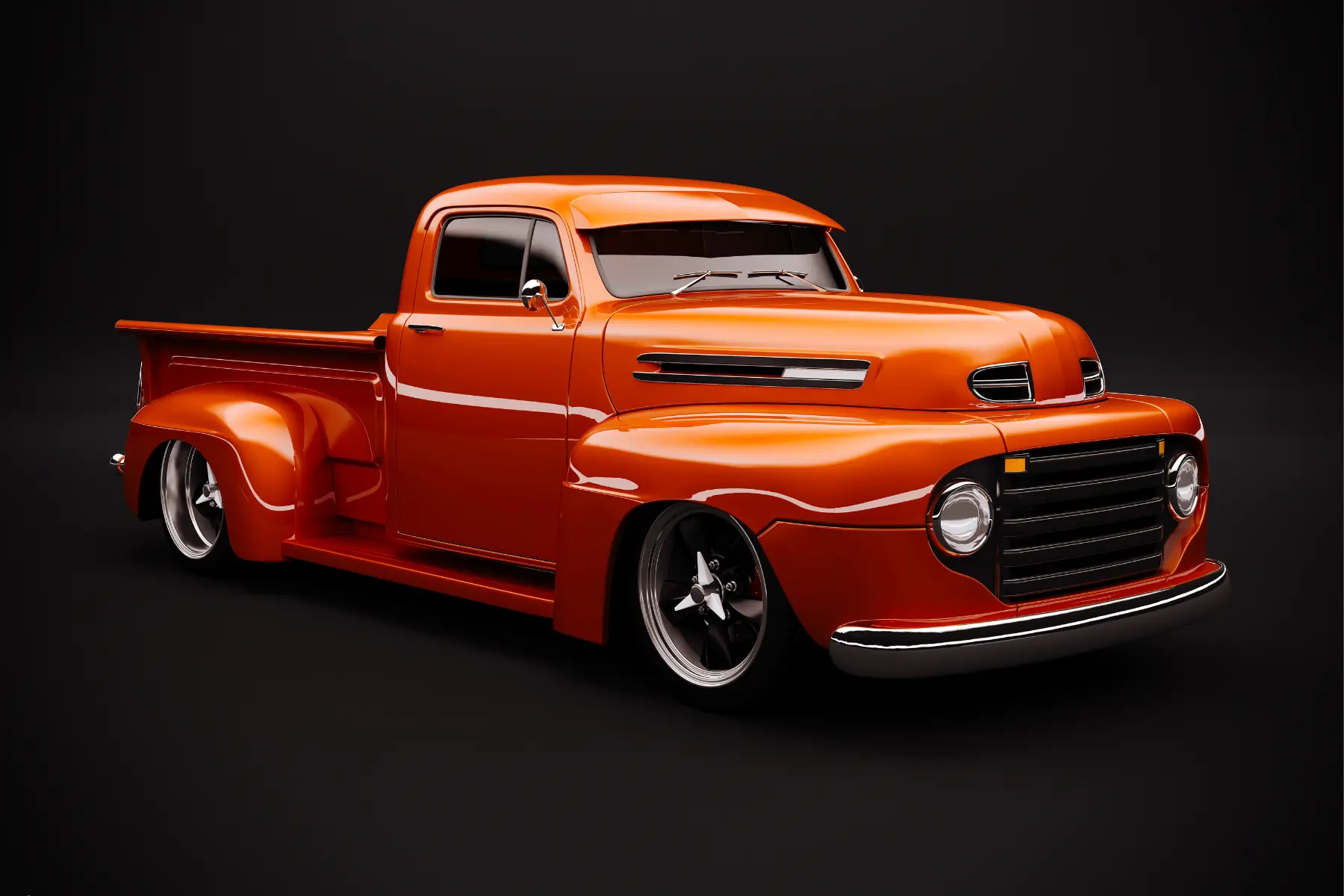If you want to make improvements to your car but aren’t sure where to start, this article is for you. Working on your car is one of the great weekend pastimes, but it also helps instill a sense of pride every time you get behind the wheel. If you’ve been looking to make upgrades and customize your car, you may have heard the word ‘tuner’ or ‘tuning’ at some point.
Car tuning refers to the modifications made to a vehicle to enhance its performance, appearance, or both. This can range from minor alterations like installing a new exhaust system or suspension kits, to major modifications such as engine swaps or turbocharging. Tuning can also involve aesthetic enhancements such as body kits, new paint jobs, and custom interiors. Essentially, tuning is about personalizing a vehicle to meet the owner’s specific desires and driving style.
When it comes to selecting a tuner car, it needs to be pointed out that any car you want to upgrade, including the one you may already have, can be a tuner car. However, there are certain qualities that make some cars easier to customize than others, which has led to a subset of vehicles that share these qualities being classified as tuners.
A good tuner car typically has several key characteristics. Firstly, it should have a strong and adaptable base platform. This includes a reliable engine with potential for increased power, a robust chassis, and a drivetrain that can handle upgraded performance specs. Secondly, tuner cars often have a widespread availability of replacement parts and a design that’s conducive to modifications. Cars that are easy to work on, both in terms of mechanical layout and availability of space under the hood, are preferred.
The significance of availability and aftermarket support can’t be overstated in the world of car tuning. Having the ability to browse and buy a wide variety of parts that are compatible with your car will make the job of tuning it easier, not to mention cheaper. Being able to access a range of parts like turbochargers, superchargers, custom wheels, suspension systems, that can be installed on your car means you have more flexibility. A strong aftermarket ecosystem means more options for customization, lower costs, and better availability of both high-performance parts and cosmetic upgrades.
Availability plays a critical role because it determines how easy or difficult it is to maintain or enhance a vehicle. Cars that are produced in large numbers typically have more readily available parts. This makes them less expensive to repair and modify, which is crucial for a tuner who might be experimenting with different configurations. Moreover, cars with a large and enthusiastic community can provide invaluable support and resources for sharing expertise and troubleshooting tips.
Another factor for consideration when it comes to tuners is your long term plan with the car. Will you hold onto it long term, or do you one day want to sell it? If a resale is on your mind, consider tuning options that don’t reduce the value or salability of the car; choosing the wrong mods can greatly reduce the pool of prospective buyers and as well as reducing the price you can get for the vehicle, particularly when it comes to items like smaller or larger wheels or spoilers and hood scoops that totally change the look of the vehicle. While you may appreciate mods like these, not every buyer will.
Exhaust that makes the engine sound “throaty” and suspension modifications that cause the vehicle to ride rough are also changes that will make the vehicle harder to sell unless you’re unwilling to reverse the modifications before you hang the FOR SALE sign on the vehicle. Engine compartment tuning should be done to be aesthetically pleasing as well as functional for the same reason.
Thus, the right combination of mechanical potential, availability of parts, and community support creates the ideal environment for car tuning, allowing enthusiasts to achieve their desired vehicle performance and aesthetic while managing costs and resource accessibility.
—
Although it’s true that any car you have the desire to upgrade can be considered a tuner, there are some cars that fit the qualities above to a tee, which has led them to become among the most popular tuner cars on the market. In some cases, certain model years have features that lend themselves better to tuning than others, but in general older models are favored in part because they are less expensive to purchase in the first place.
Honda Civic (1992-2000)
The 1992-2000 Honda Civics are regarded as excellent tuner cars for several reasons. Their lightweight chassis makes them highly responsive and agile, which is a prized quality for performance modifications. These models feature a simple yet robust engineering design that allows for easy modification and customization. The engine bay is accommodating, providing ample space for upgrades like turbochargers or engine swaps. Civics from this era also benefit from a vast aftermarket support, with an abundance of performance parts available at relatively low costs. This extensive support enables enthusiasts to extensively modify and personalize their vehicles without breaking the bank. Moreover, the popularity of these models has created a strong community of owners and experts, which acts as a valuable resource for sharing knowledge and troubleshooting modifications.
Mazda MX-5 Miata (1990-1997)
The 1990-1997 Mazda MX-5 Miata can be a great starting point for a tuner car. Firstly, its lightweight chassis and rear-wheel drive layout provide an ideal foundation for performance modifications, offering superb handling and agility that can be further enhanced with upgrades. Additionally, the simplicity of its design, including the robust 1.6L and later 1.8L engines, makes it easy for enthusiasts to work on and customize. This generation of Miata also benefits from a vast aftermarket support with a wide range of parts available, from suspension kits to turbochargers, allowing for extensive personalization and performance boosts. Moreover, the Miata’s affordability and availability make it an accessible option for those looking to enter the tuner culture. These features combine to make the 1990-1997 Miata a beloved choice among car enthusiasts looking to create a vehicle that is both fun to drive and uniquely theirs.
Subaru Impreza WRX (2002-2007)
The 2002-2007 Subaru Impreza, particularly the WRX and STI models, are highly prized as tuners. These models are equipped with Subaru’s signature symmetrical all-wheel drive system, which provides exceptional handling and traction, making them ideal for performance enhancements. The heart of their appeal lies in the robust and turbocharged boxer engines, which are known for their low center of gravity and unique sound, as well as their capacity for substantial power upgrades. The ease of modification and a strong aftermarket community further enhance their desirability, with a plethora of options available for tuning everything from the engine and suspension to the aesthetics. Additionally, the Impreza’s rally heritage adds to its allure, inspiring tuners to emulate the performance and style of championship-winning rally cars. This combination of technical prowess, modifiability, and cultural legacy makes the 2002-2007 Subaru Impreza a favorite among car enthusiasts looking to personalize and elevate their driving experience.
Nissan 240SX (1989-1998)
The 1989-1998 Nissan 240SX has cemented its status as a tuner favorite, largely due to its excellent fundamentals for drifting and sport modifications. Its rear-wheel drive setup and relatively light weight make it an ideal candidate for high-performance and drift-oriented builds. The 240SX comes with a sturdy chassis that offers great balance and handling, which can be dramatically enhanced with aftermarket parts. Additionally, its engine bay is accommodating enough to accept a variety of engine swaps, the most popular being the swap to a more powerful Nissan SR20DET or even a V8, providing a substantial boost in power. The availability of a vast aftermarket, full of performance parts and kits designed specifically for the 240SX, enables enthusiasts to extensively customize their vehicle’s performance, aesthetics, and handling characteristics. This makes the 1989-1998 Nissan 240SX a highly versatile platform for tuning, appealing to a wide range of car enthusiasts from drifters to circuit racers.
Toyota Supra MK4 (1993-1998)
The 1993-1998 Toyota Supra MKIV is revered in the tuner community, primarily for its robust 2JZ engine, which is famous for its remarkable durability and immense tuning potential. This inline-six engine can handle significant power increases beyond its factory settings, often with basic modifications like upgraded turbochargers, intercoolers, and fuel systems. The Supra’s rear-wheel-drive configuration and aerodynamically efficient body also make it a prime candidate for both drag racing and high-speed track performance. Additionally, the car’s sophisticated suspension system provides a solid base that can be finely tuned for even better handling and stability. With a strong global following and extensive aftermarket support, the MKIV Supra offers enthusiasts endless customization options, making it not just a performance powerhouse but also a symbol of car culture and technological prowess in the automotive world.
Ford Mustang (1999-2004)
The 1999-2005 Ford Mustangs, part of the fourth generation of this iconic American muscle car, are celebrated in the tuner community for their strong performance foundation and customization potential. Equipped with robust V6 and V8 engines, including the popular 4.6L V8 in the GT models, these Mustangs offer a solid base for power upgrades. The simplicity of the pushrod design in earlier models and the modular nature of the later SOHC and DOHC engines allow for straightforward modifications, ranging from superchargers and turbo kits to exhaust systems and engine swaps, which can significantly boost horsepower and torque. The extensive aftermarket support for the Mustang means that parts are readily available and often affordable, making it easier for enthusiasts to enhance everything from the car’s performance to its aesthetics. Additionally, the Mustang’s rear-wheel-drive layout is ideal for achieving improved handling and drivability with the right suspension upgrades. This combination of power, adaptability, and community support makes the 1999-2005 Ford Mustang a favorite among car enthusiasts looking to personalize and enhance their vehicles.
Volkswagen Golf GTI (2003-2019)
The 1999-2005 Volkswagen Golf GTI, representing the fourth generation of this iconic hatchback, holds a special place in the tuner community due to its blend of practicality and potential for performance enhancements. Known for its punchy 1.8T turbocharged engine, this era of the GTI provides a solid foundation for power upgrades through relatively straightforward modifications such as ECU tuning, turbo upgrades, and exhaust systems, which can significantly increase horsepower and torque. The GTI’s compact size and front-wheel drive layout also make it an excellent platform for handling improvements, with a wide range of suspension kits and brakes available that transform its driveability for sharper, more dynamic performance. Additionally, the Golf GTI benefits from strong aftermarket support, offering enthusiasts countless customization options for both performance and aesthetics. This accessibility and versatility make the 1999-2005 Golf GTI a popular choice for those looking to create a high-performance vehicle that remains usable as a daily driver.
These cars provide a good foundation for tuning due to their affordability, availability, and extensive aftermarket support. They also have strong communities around them, which can be invaluable for beginners looking for advice and inspiration.





